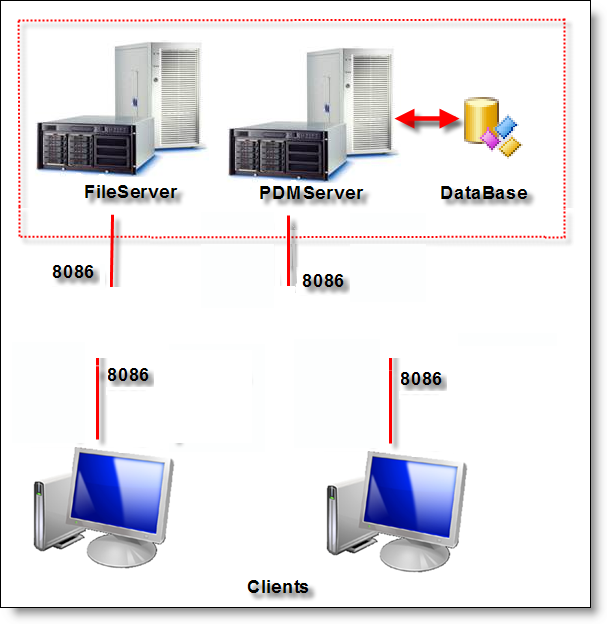
Manage the PDM server
|
Manage the PDM server |
|
IT IS IMPERATIVE TO REGULARLY BACKUP THE DATABASE, VAULT AND WORKSPACES OF EACH CLIENT STATION ( if they are not centralized). ALL BACKUP INFORMATION IS INDICATED IN THE INSTALLATION GUIDE (DATA/BACKUP PROCEDURE CHAPTER ). FOR SECURITY REASONS, THESE BACKUPS HAVE TO BE SAVED ON ANOTHER DISK OR BETTER, ON ANOTHER SERVER. |
This dialog allows to start the PDM server. It also allows to know the status of this service and to configure it (select the SQL server, the name of the database to connect on, define the vault location, ...)
It is composed of several sections:
Status:
|
This section allows to know the status of the PDM service and gives some informations in case of troubles.
The icon is situated beside the Windows clock and provides information on the service state.
This service can also be accessed from the Windows services console (services.msc command in the Windows Run menu). After the installation of TopSolid'Pdm Server, an icon is displayed on the desktop. It allows to run the TopSolid'Pdm Server Service Administration application. After the installation of TopSolid, for a use in Local Pdm server mode, this application is ran when TopSolid is started, or can be started independently by double-clicking on c:\Program Files\TOPSOLID\TopSolid 7\bin\TopSolid.Pdm.ServerServiceAdmin.exe.
|
Execution mode: (not available for a Local Pdm Server).
|
This section allows to select the Pdm server execution mode:
|
Server:
|
This section allows to select the SQL instance to use (except for the TopSolid'pdm Local Server which can only be .\SQLTOPSOLID) and the database. For the primary Pdm server, you will have to select a snapshot folder, when for the secondary one, you will have to fill the primary server.
|
Vaults: (bot available for a Secondary Pdm Server).
|
This section allows to Add, Modify or Remove vaults, which can be with the TCP or the FTP protocol. (With TopSolid'Pdm Local Server, only the vault path on a local disk can be defined).
Defined vaults are listed and their location indicated.
|
Secondary servers: (only available for a Primary Pdm Server).
|
This section displays all secondary servers of this primary server. On the right, each secondary server indicates its status. (started, stopped, ....) |
Bottom area of this dialog:
|
This section allows to Start, Restart and Stop the TopSolid'Pdm server service or to access to the Advanced management.
|
When using the PDM in client/server mode, the communication between clients and server is done through the network via listening ports. These ports have to be opened inlet and outlet on each server and clients.

8086: The PDM server's main listening port. It is on this port that the client connects to the server. If it is changed, it must be on the server and on each client. This port is also used by the file server.
In the case of the TopSolid'Pdm Local Server use, the listening port by default is 8006.
|
|